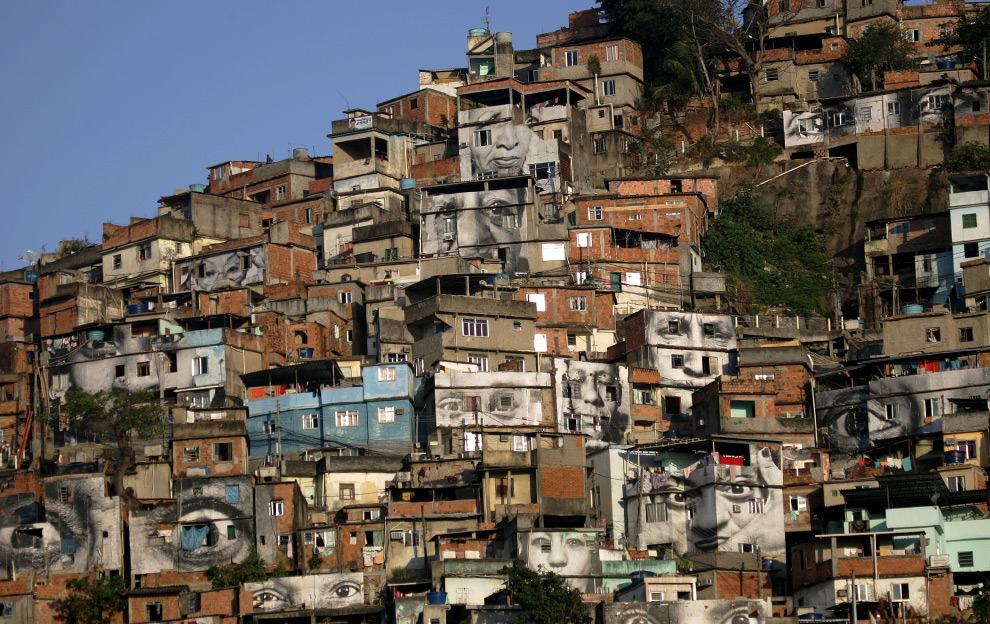 |
| Photo from the Big Picture. |
There's been a lot of news about JR lately, the artist who is famous for posting enormous portraits on the favelas in Rio de Janiero. The New York Times reports that he is the recipient of the TED award, which helps fund global community-improving projects.
His music video work was also featured in the Wooster Collective.
Find more information on Artsy's JR page!
Here is an essay I wrote when I found out about his work, in 2008:
The photographer JR creates stunning portraits. JR has posted his images not in galleries, but directly in the public’s view in the favelas (slums) of Rio de Janeiro, Brazil. By choosing to put the portraits up on buildings in some of the poorest neighborhoods, he displays the faces of the women in their hometowns. This project is meant to focus on their strength. It is called “Women are Heroes.”
This project is a continuation of the Frenchman’s photographic explorations of other weathered towns around the world, specifically, in Africa. JR has taken portraits in Kenya, Sierra Leone, Liberia, and Sudan. He plans on continuing photographing women around the globe, heading back to Africa and also to Asia. He has been taking pictures of women whose families have been attacked, beaten, and killed by police and soldiers.
In an interview, he recalls how the women look dead and defeated, but come to life when they are asked to pose for his camera. Despite the gravity of his subjects’ lives and situations, his portraits are often not serious-faced, with the women giving outright silly expressions to the camera. It is interesting that throughout these women’s tribulations, they still oblige JR’s requests for bemused faces.
I like this project. I think its enlightening for JR to share these pictures around the globe. He has even put up enormous-scale prints on buildings in Europe, and perhaps he’ll display them in the US, where people here can see them and try to find out more about them. The initial impact of seeing these giant black and white eyes peering out from homes, not from windows, but from the actual favela homes people live in, is pretty dramatic. Hearing about the experiences from some of these women provides much more explanation than any artist statement could depict (interviews here). His website shows not only the photographs, but the crowds of people observing his work everywhere he installs. Perhaps with his portraits, he can bring notice of the plights of these women to the tourists who come to Rio de Janeiro.
Upon seeing large outdoor images without words, I want to hear an explanation of what is going on. I think his project is more accessible (in more languages) without text. Text conjures the notion of advertisement, and in a fast-paced, touristy city, the meaning might be lost or merely glossed over in a rush.
I think it is gutsy for JR to introduce himself to these women and ask them to often share their most painful memories, and alternately, to give him whimsical faces to place on the side of a large building (or several) in their towns.
It makes me wonder what artwork he produces in his French hometown. Does he place the same pictures on buildings, bridges, and cars there, too? How did he first find out about the plights of these women? Does he keep in contact with the women he photographed?
I’m glad his artwork is aiming towards social reform, raising awareness within these women’s own communities and hopefully grabbing the attention of the world.
And indeed it has.
Songs (YouTube):
Camera Talk - Local Natives
Photograph - Ringo Starr

No comments:
Post a Comment